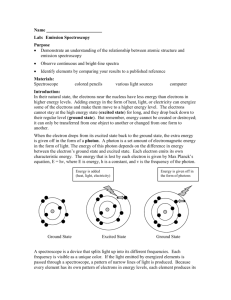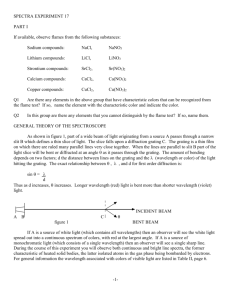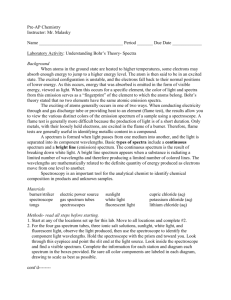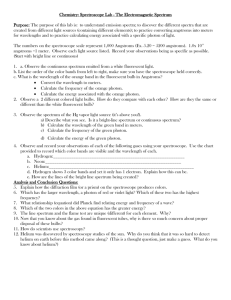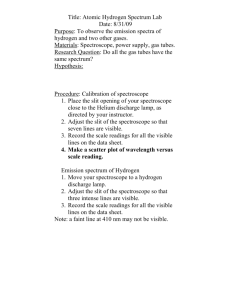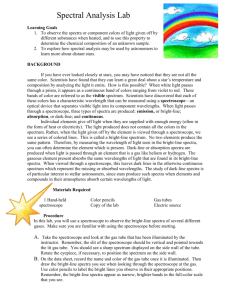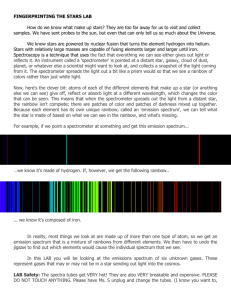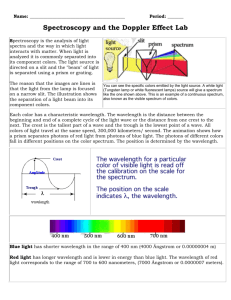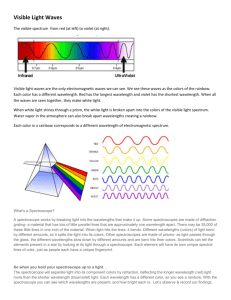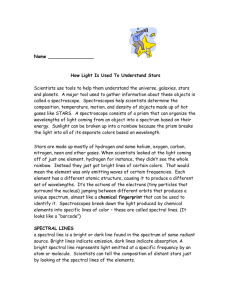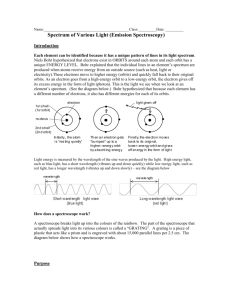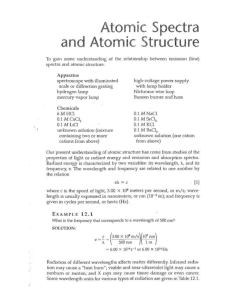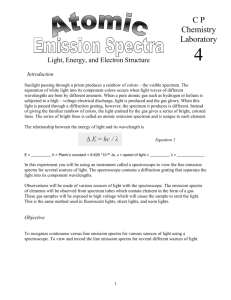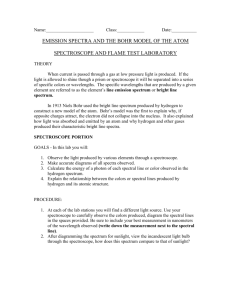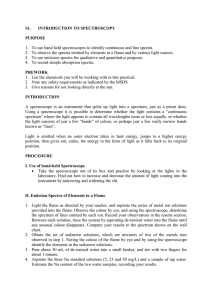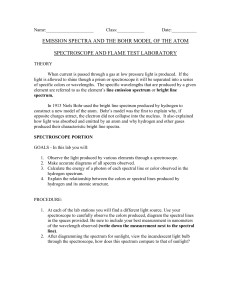Spectrum Lab
advertisement
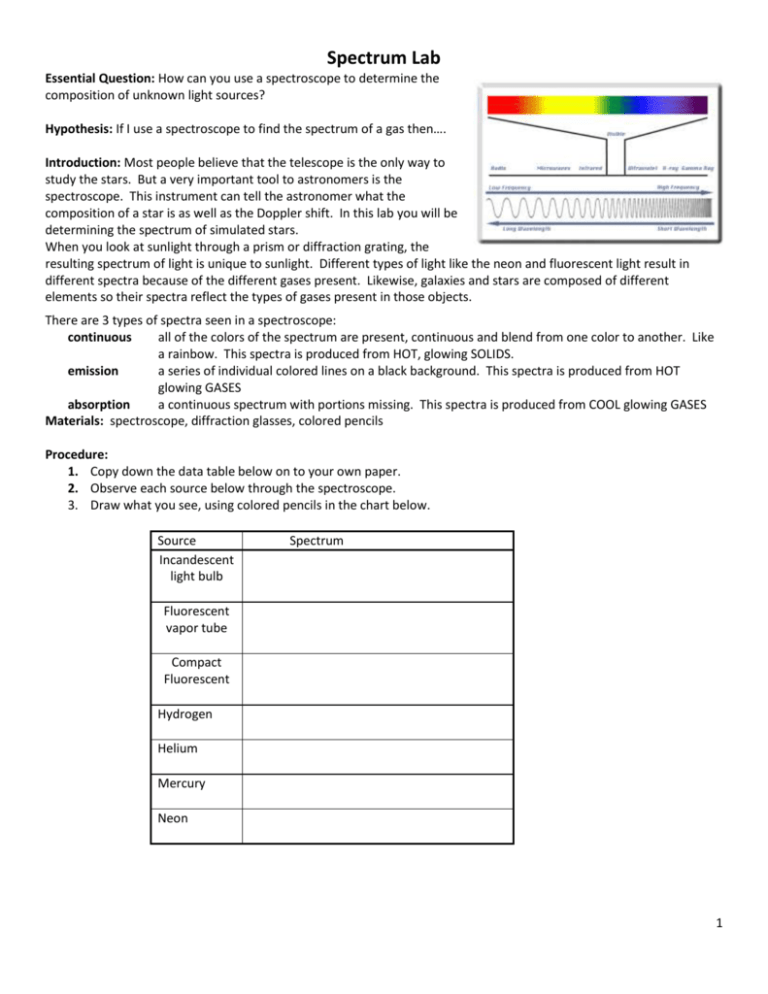
Spectrum Lab Essential Question: How can you use a spectroscope to determine the composition of unknown light sources? Hypothesis: If I use a spectroscope to find the spectrum of a gas then…. Introduction: Most people believe that the telescope is the only way to study the stars. But a very important tool to astronomers is the spectroscope. This instrument can tell the astronomer what the composition of a star is as well as the Doppler shift. In this lab you will be determining the spectrum of simulated stars. When you look at sunlight through a prism or diffraction grating, the resulting spectrum of light is unique to sunlight. Different types of light like the neon and fluorescent light result in different spectra because of the different gases present. Likewise, galaxies and stars are composed of different elements so their spectra reflect the types of gases present in those objects. There are 3 types of spectra seen in a spectroscope: continuous all of the colors of the spectrum are present, continuous and blend from one color to another. Like a rainbow. This spectra is produced from HOT, glowing SOLIDS. emission a series of individual colored lines on a black background. This spectra is produced from HOT glowing GASES absorption a continuous spectrum with portions missing. This spectra is produced from COOL glowing GASES Materials: spectroscope, diffraction glasses, colored pencils Procedure: 1. Copy down the data table below on to your own paper. 2. Observe each source below through the spectroscope. 3. Draw what you see, using colored pencils in the chart below. Source Incandescent light bulb Spectrum Fluorescent vapor tube Compact Fluorescent Hydrogen Helium Mercury Neon 1 QUESTIONS: 1. Explain what a spectroscope does. 2. Which spectrum was: continuous: emission: absorption: 3. Which light source was burning hot solids? Explain how you determined this. 4. Which light source was burning hot gases? Explain how you determined this. 5. Which light source was passing through a cool gas? 6. Write (or color) the order of the spectrum from shortest to longest wavelength. longest wavelength shortest wavelength 7. Write a short paragraph that explains what information a spectroscope may give astronomers. Conclusion: Use your rubric 2
